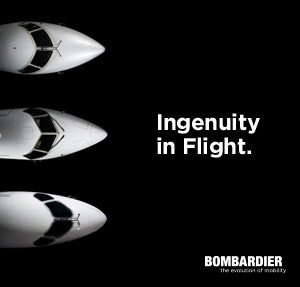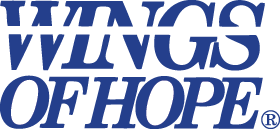navAero Signs Fleet-Wide Class 2 Electronic Flight Bag Contract with European Charter Operator Viking Airlines
March 19, 2009
SUNDSVALL, SWEDEN, March 20, 2009 — navAero announces that the tBag™C22 Electronic Flight Bag system has been selected by Viking Airlines for fleet wide deployment for B737NG and B737CL Series and McDonnell Douglas MD-83 aircraft. “We are convinced that navAero´s technology will give us a future proof and cost effective platform that will further enhance our operations. We’re tremendously impressed of the broad range of achieved FAA and EASA STC´s, this shows that our choice is right”, says Christian Tadjeran, Accountable Manager & CEO of Viking Airlines. The contract covers a fleet wide deployment of Viking Airlines´ five Boeing 737s and one McDonnell Douglas MD-83 aircraft. Deployment of the contracted platform has already started and will be finalized during 2009. “We are very happy to announce that yet another European customer have chosen our cost efficient, environmental friendly and safety enhancing state-of-the art EFB platform”, concludes Knut Aabo of navAero.
navAero, Inc. is the world leader in developing and commercializing cost effective electronic flight bag products.
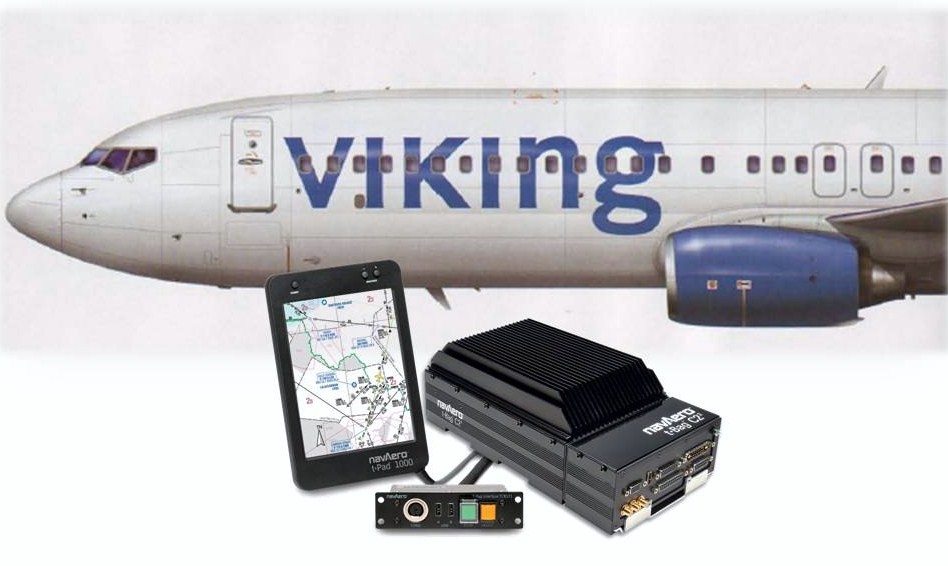
Air Botswana takes delivery of its first ATR 72-500
March 19, 2009

from left to right: L.M. Bantsi, Acting General Manager of Air Botswana, and Stéphane Mayer, ATR CEO.
National-flag carrier Air Botswana today took delivery of its first new ATR 72-500, in accordance with a deal for two ATR 72-500s inked last year and valued at some US $ 37 million. With its new ATR 72-500s, configured with 68-seats and equipped with the “Elegance Cabin” and In-Flight Entertainment, Air Botswana will be able to respond to the growth of the air transport demand in the country by increasing the passenger capacity of its current fleet of 3 ATR 42-500s. In addition, the airline will fly its new ATR turboprops in routes previously operated by regional jets that become unprofitable.
Commenting on the delivery, L.M. Bantsi, Acting General Manager of Air Botswana, quoted: “The introduction of these new ATR 72-500 aircraft responds to our need to increase our route coverage and to provide more frequencies to our passengers. There is a strong development of the regional air transportation in Botswana and we are committed to match this opportunity with larger capacity ATRs.” He added: “We are very satisfied with the reliability and the performance of the ATR 42-500s we already fly. The ATR ‘-500 series’, with their ability to operate in hot and high environments are optimally adapted to our needs.” Mr. Bantsi concluded: “The relations of Air Botswana with ATR have existed for the past 20 years, and are now further enhanced by the acquisition of the two ATR 72-500 aircraft to be delivered today and in May 2009. Indeed, this is a long and fruitful experience and we expect to continue with ATR for many years to come.”
Stéphane Mayer, ATR CEO, underlined “the very strong commonality between both the ATR 42-500 and the ATR 72-500, which will ease the introduction of the new aircraft into the fleet of Air Botswana. Such commonality will also represent a significant reduction in training and spares investments as well as ongoing operating costs.” He added: “The ATR aircraft are playing an important role in the development of the regional air connectivity in the whole African continent. We count today more than 80 aircraft being operated by some 25 carriers. This reflects the suitability of the ATR aircraft for some specific operating conditions in the continent, including hot and high environments and small and remote airfields.”
Since the beginning of the programme, ATR has sold 979 aircraft (420 ATR 42s and 559 ATR 72s).
The ATR –500 series:
With its ATR 42-500 and ATR 72-500, ATR supplies state-of-the-art aircraft with the highest standards of comfort. The advanced six-blade propeller provides remarkably low noise levels. All ATR models are compliant with noise regulations and have a large margin with regard to Chapter IV (ICAO) regulations. The ‘-500 series’ feature the lowest fuel consumption per passenger and CO2 emissions of the regional aviation, thus contributing to make ATR the “Green Player” of the regional aviation.
About Air Botswana
Air Botswana was created in 1988 as the national flag carrier. Today, the airline contributes to the development of tourism and business in the country, and
is an active member of the African Airlines Association (AFRAA). On the ground, the airline’s reputation for excellence extends to the modern engineering hangar at Sir Seretse Khama Airport where Air Botswana technical staff carry out full maintenance not only on the home fleet but also on the aircraft of other African carriers. This capability could attract contract work from ATR operators in Zambia, Malawi, Kenya, and as it was the case, Tanzania, contributing significantly to revenue.
About ATR
Toulouse, Southern France-based regional aircraft manufacturer ATR is the world leader in the 50 to 74-seat turboprop market. ATR is an equal partnership between Alenia Aeronautica (a Finmeccanica company) and EADS. In 2008, ATR posted an annual turnover record, with US $ 1.3 billion.
navAero lands major Class 2 EFB contract with Norwegian Air Shuttle
March 13, 2009

SUNDSVALL, SWEDEN, March 12, 2009 — navAero announced today that the tñBag™C22 Electronic Flight Bag system has been selected by Norwegian Air Shuttle for fleet-wide deployment on the airline’s B737-NG series aircrafts.
The contracted program includes cross-connected dual tñBag C22 EFB systems with the navAero tñPad™ 2000 display. The systems will also feature the newly commercialized navAero-designed, UMTS/HSDPA – 3G cellular modem module for on-ground data transfer, ARINC 429 connectivity and custom software that enables the utilization of airport moving map applications on a Class 2 EFB.
“After a thorough evaluation, we have concluded that no competing Class 2 EFB system available on the market with an EASA approved STC provides such flexibility, high performance and technical content at such an affordable price as the navAero tñBag C22 EFB,” stated Ole Christian Melhus, EFB project manager & deputy director of flight operations, Norwegian Air Shuttle ASA. “We are very pleased to be one of the first airlines in Europe to receive an operational approval for use of a Class 2 EFB system in all phases of flight. This is in line with our long term strategic IT development process in optimizing and assuring operational control within our expanding operation.”
The navAero contract covers a fleet wide deployment of Norwegian’s currently operating 40 B737 aircraft, with an option of an additional 42 B737-NG aircraft currently on order. The deployment of the navAero EFB platform has already begun and will be completed during 2009.
“This contract is a major breakthrough where we have shown that our tñBag C22 Electronic Flight Bag system is not only suitable for the retrofit market, but is also a future-proof platform that provides an appropriate, effective and high-tech environment for new production aircraft,” said Knut Aabo, navAero vice president of sales & marketing. “We are very happy to continue to provide our European customers with a cost reducing, environmental friendly and safety enhancing state-of-the art EFB platform.”
About Norwegian Air Shuttle ASA
Norwegian Air Shuttle ASA is a low-fare, point-to-point airline, registered on the Oslo Stock Exchange, employing approx. 1400 people. In 2008 Norwegian Air Shuttle AS transported 9.1 million passengers. The company’s headquarters are located at Fornebu, outside Oslo.
About navAero
navAero, Inc. is the world leader in developing and commercializing cost effective electronic flight bag products.
Barco secures avionics deal for ATR regional airliner
March 12, 2009
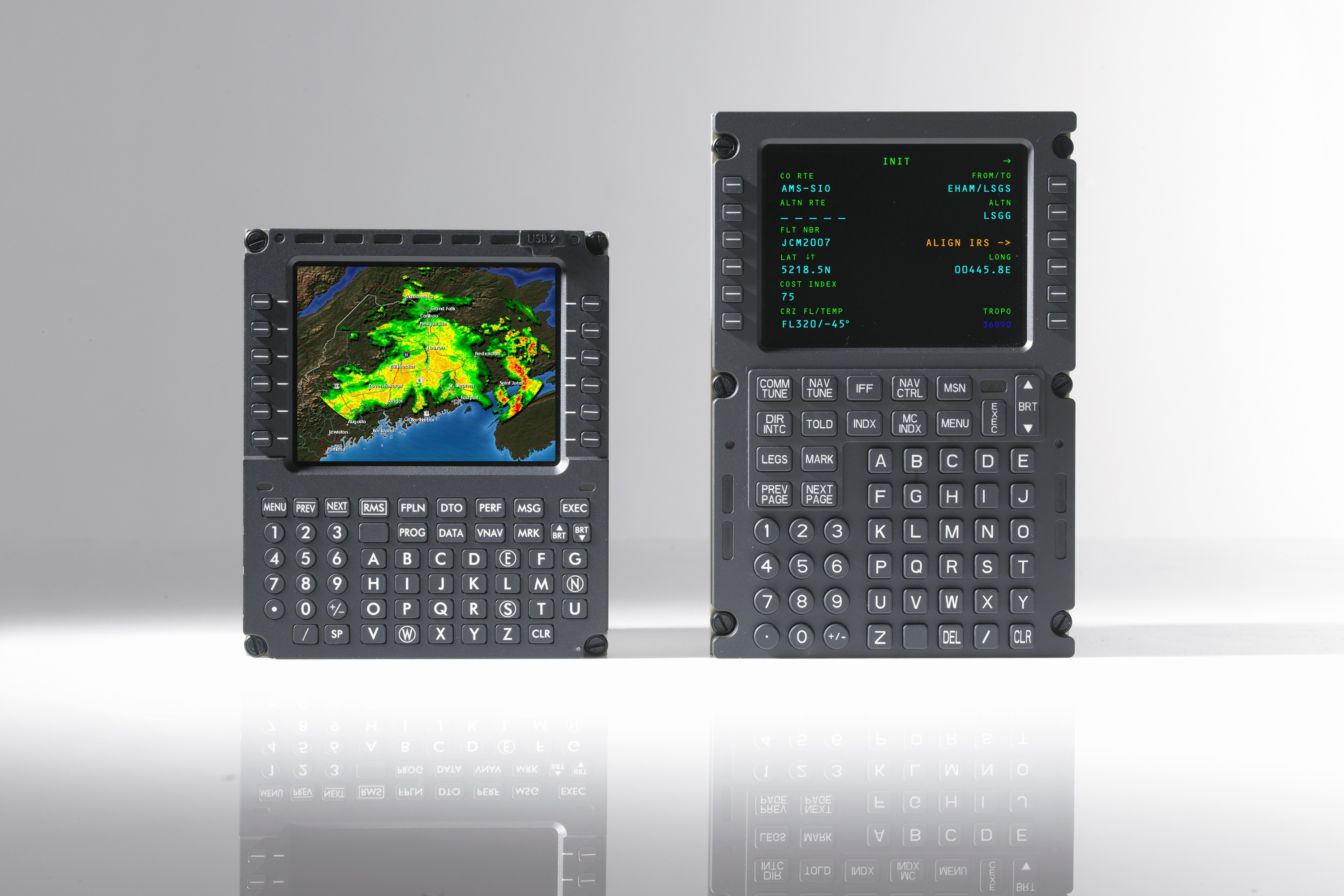
Avionics Conference and Exhibition, Amsterdam, the Netherlands, 12 March 2009 – Avionics display provider Barco has achieved a new success with its control display unit on the civil aviation market. The company announced today that its CDMS-3000 display has been selected for the future ATR-42 and ATR-72 regional passenger aircraft. The next generation ATR cockpits will be equipped with a brand-new Thales TopDeck avionics suite, each including two Barco CDMS-3000 units.
“We are very proud to have been selected for this forward-fit cockpit project,” commented Yves Vanhauwaert, General Manager of Barco’s avionics business. “It is a recognition of our leading avionics display offering, as well as our unique position in the industry as an independent display provider.”
“Barco CDMS-3000 control display units are valued by the industry for their flexibility and excellent performance in general and their high-grade optical performance in particular. Integrated into the flexible Thales TopDeck flight deck, our units will bring the best of today’s avionics display technology to the ATR-42 and ART-72 cockpits,” Vanhauwaert continued.
The CDMS-3000 is the successor of Barco’s widely-used CDMS series. Featuring the latest display technology, it combines excellent sunlight-readability with compact dimensions, low weight and optimum energy efficiency. The CDMS-3000 comes as a complete, ETSO-C113 certified product line, including both civil and military-oriented versions. A variety of keyboard sizes is available to enable form-fit-function compatibility with existing units.
Barco’s CDMS-3000 displays will take off aboard the recently-introduced ATR-42-600 and ATR-72-600 aircraft. This 600-series builds upon the proven advantages of the existing ATR aircraft, but includes new Pratt & Whitney engines, a new TopDeck glass cockpit, and LED lighting in the cabin. The aircraft are designed and manufactured by ‘Avions de Transport Regional’, which is a joint venture company between EADS and Finmeccanica / Alenia Aeronautica. At the moment, ATR airliners are in service with 140 operators in 80 countries.
About Barco
Barco, a global technology company, designs and develops visualization products for a variety of selected professional markets. Barco has its own facilities for Sales & Marketing, Customer Support, R&D and Manufacturing in Europe, North America and Asia Pacific. Barco (NYSE Euronext Brussels: BAR) is active in more than 90 countries with about 3500 employees worldwide. Barco posted sales of 725 million euro in 2008.
FreeFlight Systems Introduces RAD-40 Radar Altimeter Display
March 12, 2009
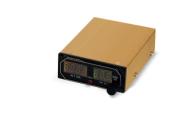
A Critical Instrument for Pilots Flying in Task-Saturated Situations
WACO, Texas, March 12 /PRNewswire/ — FreeFlight Systems, a global supplier of high criticality avionics systems, announces the introduction of a new radar altimeter display, the RAD-40. The RAD-40, a panel-mount digital display, provides the pilot with a precise readout of the aircraft’s height above ground level on a bright LED readout. Moreover, this new display includes a pilot-selectable Decision Height (DH) and five additional trip points (from 100 – 1000 feet), all with discrete outputs designed to control an audible tone or interface to third party equipment.
The RAD-40 is compatible with FreeFlight Systems’ TSO-certified RA-4000 and RA-4500 Radar Altimeters. The RA-4500, with an ARINC 429 interface, and the RA-4000 are high integrity, professional grade radar altimeters designed to enhance operational safety during approaches, nighttime operations, and flights above hazardous terrain.
“When flying in degraded weather conditions, pilots find themselves in task-saturated situations which is why we designed the RAD-40 to be clear, bright, and easy to read with reliable warnings when both decision height and pre-set warning altitudes are met,” states Robert Schneier, COO, FreeFlight Systems. “When pilots are ‘in the weeds,’ that is low to the ground, they are looking outside because the weather is bad or they are fixating on a landing zone. In this situation our RAD-40, combined with either the RA-4000 or RA-4500, could very well be the last — and only — thing that keeps them from hitting the ground,” adds Tim Taylor, president and CEO, FreeFlight Systems. “We take that responsibility very seriously when designing our systems.”
In addition to the standard version, a Night Vision Goggle (NVG) compatible display is available. For certain installations, a display mounted in a round faceplate adapter is also offered as an option.
The RAD-40 is available at a retail price of $2,525 when purchased with an RA-4500 or RA-4000 and $2,995 when purchased separately. TSO certification is expected in mid-March, with delivery in late March 2009.
About FreeFlight Systems
Founded in 2001 through the acquisition of Trimble Navigation’s avionics products division, FreeFlight Systems is an international supplier of professional grade navigation systems for commercial and military aircraft. With a focus on safety, simplicity, and reliability, FreeFlight Systems offers a broad array of GPS navigation systems, GPS/WAAS sensors, and radar altimeters worldwide. Based in Waco, TX, FreeFlight Systems was the first company to certify an airborne Wide Area Augmentation System (WAAS) receiver. For more information, please visit www.freeflightsystems.com.
navAero Class 2 EFB – first Part 121 deployment in the world with Airport Moving Map
March 11, 2009
 CHICAGO IL USA FEBRUARY 27, 2009 — navAero announced today that Continental Airlines has successfully completed the world’s first flight with Jeppesen Airport Moving Map (AMM) application deployed on a Class 2 Electronic Flight Bag platform using the navAero t†Bag™C22 EFB system.
CHICAGO IL USA FEBRUARY 27, 2009 — navAero announced today that Continental Airlines has successfully completed the world’s first flight with Jeppesen Airport Moving Map (AMM) application deployed on a Class 2 Electronic Flight Bag platform using the navAero t†Bag™C22 EFB system.
As stated by Jeppesen in their Press Release issued February 27, Continental plans an aggressive retrofit deployment of navAero Class 2 EFB systems starting with 12 airplanes the first month, leading to deployment on all Boeing 757 and 767 aircraft. The navAero EFB hardware deployed with the Jeppesen airport moving map software provides airline operators with enhanced safety capabilities, especially at busy airports.
The first STC for the B757 was executed by navAero in cooperation with U.S. Technical. STC ST02161 LA was issued on August 11, 2008 and includes cross-connected dual tñBag C22 EFB systems with the tñPad 1500 display. The systems also feature the newly commercialized navAero-designed and a AT&T-certified, UMTS/HSDPA – 3G cellular modem module for on-ground data transfer. The navAero ARINC 429 module and custom software enables the deployment of Jeppesen’s Airport Moving Map application on a Class 2 EFB to show pilots their position (“own-ship”) on the airport surface. The result is much improved positional awareness among flight crews, which is a critical safety factor for reducing runway incursions during ground operations, especially at busy commercial airports with complex runway and taxiway layouts.
“This deployment represents an important milestone as navAero continues to partner with our airline customers and our strategic teaming partner Jeppesen to help increase efficiency on the flight deck and safety on the ground,” said Stefan Ridderheim, navAero CEO. “By retrofitting their existing aircraft with Class 2 EFB hardware solutions and Jeppesen Airport Moving Map, airlines can take a major step forward in transitioning to a paperless flight deck and reducing the risk of runway incursions.”
Presently, the vast majority of navAero’s 18 airline customers are evaluating the implementation of Airport Moving Map capabilities to extend the reach of this important safety enabler.
About navAero
navAero is the world leader in developing and commercializing cost effective electronic flight bag systems. For further information, visit the navAero website at www.navaero.com
About Jeppesen
For 75 years Jeppesen has made it possible for pilots and their passengers to safely and efficiently reach their destinations. Today this pioneering spirit continues as Jeppesen delivers essential information and optimization solutions to improve the efficiency of air, sea and rail operations around the globe. Jeppesen is a subsidiary of Boeing Commercial Aviation Services, a unit of Boeing Commercial Airplanes.
RotorWay International chega ao Brasil
March 11, 2009

Miami-Florida – RotorWay International (www.rotorway.com), o mais antigo e maior fabricante de americano e do mundo em helicóptero experimental (kit), chega ao Brasil “pilotado” por Richard Sanchez da www.helimiami.com que é um dos serviços prestados pela Moriah International, Inc (www.moriahinternational.com) , o qual é presidente.
Com diversos prêmios e reconhecimentos na indústria de aviação mundial e americana, RotoWay International lança o A600 Talon com top-quality, engenharia e tecnologia de ponta mais avançadas disponíveis no mercado.
Sanchez admite que o momento para lançar a A600 Talon no Brasil é muito oportuno. O Brasil está crescendo cada vez mais no uso de helicópteros. O preço de compra ímbativel para aqueles que sonham em pilotar seu próprio helicóptero de 2 lugares, é sómente US$ 112.583,00 Fob/fábrica Arizona no modelo mais completo. O prazo de entrega é de 8 à 10 semanas no máximo; e o tempo necessário para montagem é de no máximo 450 horas.
No Brasil, esteja o comprador onde estiver, damos toda assessoria alfandegária necessária para dar tranquilidade e segurança no processo de importação. E mais, estamos trabalhando firmes para o financiamento de uma aeronave, porque para 3 aeronaves, já temos financiamento de 85% com juros americanos, para pagar em 5 anos. Quem nem dizem os americanos “não pode ficar melhor do que isso”, brinca Sanchez.
Maiores informações em português, favor contatar Richard Sanchez nos e-mails rsanchez@moriahinternational.com ou info@helimiami.com . Ou no telefone 305-591-0309 no horário comercial da cidade de Miami, FL.
Latitude Partners with navAero to Deliver Robust EFB Satcom Interface
March 10, 2009
Latitude Technologies announced today that the company has completed testing and has conclusively proven the interoperability of the text messaging, telephone dialing, and device memory functions of its SkyNode® S200 satcom voice and data transceivers with the t·BagC2_ Class 2 Electronic Flight Bag (EFB) from navAero Inc. Interoperability with SkyNode S100 satcom data transceivers and the navAero EFB was also proven for geo-positioning and other flight data.
The Latitude software utility will allow navAero EFB users to install software that complements and expands the core functionality of their EFBs. Operators that integrate their navAero EFBs with SkyNode S200 transceivers will now also be able to access text messaging, conventional and speed dialing, and number recall functionality right on their touch screen EFB displays.
With the new utility, SkyNode devices will be able to provide high-performance WAAS and GPS position information to navAero EFBs for moving map and real-time, on-screen satellite weather displays for any position along the route. Text messages from the cockpit and cabin can be sent and received with any web-connected device through Latitude’s LWS Sentinel™ data service. Received messages can be displayed in-flight through the EFB, a PDA, or a laptop computer. Crew and passengers can communicate using operator pre-defined messages or messages can be typed free-hand.
This robust integrated on-board voice and data management solution can be purchased as separate components from the two manufacturers. It also can be retrofitted to already-installed navAero EFBs or SkyNode satcom devices. Avionics distributor, reseller, and installer information packages will be distributed in the future.
About navAero Inc.
navAero is the world leader in developing and commercializing cost effective electronic flight bag systems. For further information, visit the navAero website at www.navaero.com
About Latitude Technologies
Latitude Technologies Corporation, headquartered in Victoria, British Columbia, Canada, is a global supplier of avionics voice and data equipment and services including the SkyNode S200-021 – the smallest, lightest, most versatile and economical to operate voice and 2-way data communication device in the world, featuring autonomous and host-polled asset positioning, sensor/event relay, and email and custom messaging interfaces.

The Mexican Ministry of Defence Orders 6 EC725 Helicopters from Eurocopter
March 10, 2009
Mexico City, March 10, 2009
Eurocopter has chalked up another success in Latin America: The Mexican Ministry of Defense has placed an order for six EC725 helicopters.
The medium-lift helicopters will mainly be used for transport and civil security missions.
This new order—the first ever placed with Eurocopter by the Mexican Ministry of Defense—will help reinforce the European helicopter manufacturer’s presence in Mexico. The Mexican Naval Ministry already operates Panther helicopters manufactured by Eurocopter, and the EC225 and Super Puma currently serve the Mexican President. Some 350 Eurocopter helicopters are in service in the region, and the Group’s market share has progressed steadily to more than 50% today.
Eurocopter has been present in Mexico for more than 25 years. In 1982, the subsidiary Eurocopter de Mexico SA (EMSA) was opened to cover Central America, the Caribbean, Columbia, Venezuela and Ecuador. The main activities of the subsidiary, which now has a staff of 165 employees, are maintenance, aircraft assembly, customization, and technical and logistics support for the Eurocopter fleet in the region. In response to rapid market growth, the Group has become a major provider of training for pilots and technicians in the region through partnership agreements with educational institutions such as the National Polytechnic Institute (IPN), (CONALEP) Mexico’s National Technical Professional School and the country’s Pilot Training Academy. Another response to this rapid growth has been the development of the Group’s industrial activities in Mexico, and talks are currently underway with the Mexican authorities to decide on the location of an industrial plant.
The EC725 is the latest member of the Cougar family. The medium-lift, twin-engine helicopter in the 11-ton class is equipped with five main rotor blades. With its impressive fuel capacity, the EC725 offers flight endurance of 5.5 hours. It can carry up to 29 passengers in addition to the two pilots. The EC725 was designed to perform a wide range of missions, including search and rescue, long-distance transport, emergency medical services and logistics support. Before the current contract was signed, 151 orders for the EC725 and its civil version (the EC225) had already been received from 17 different customers. Its multi-purpose capabilities made it the logical choice of the Mexican Ministry of Defense.
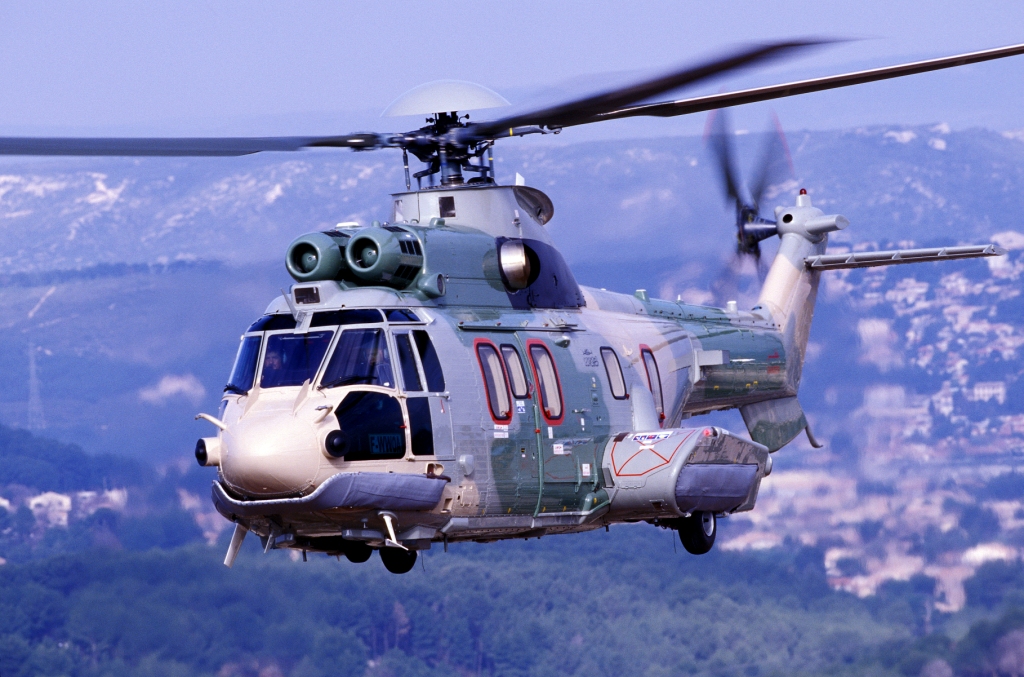
Banyan Celebrates 30-Year Anniversary
March 6, 2009
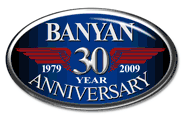
Fort Lauderdale, FL – Located at Ft. Lauderdale Executive Airport, Banyan Air Services, Inc. is proud to announce 30 years of aviation excellence.
“It has been my sincere privilege over the years to grow with our teammates as we rally around clearly defined goals, strictly adhere to our values and passionately pursue excellence in the way we serve our customers and our community,” stated Don Campion, Banyan’s founder.
Banyan began in 1979 in a small hangar as a little maintenance facility serving local charter companies that operated a few piston aircraft. In 1985 Banyan teamed up with Holland Builders, a hangar developer, which became the property side of the equation while Banyan grew its aviation services.
Over the years, Banyan expanded in size and capabilities by adding FBO services, aircraft sales and management, turbine airframe and engine maintenance, avionics installations, aircraft parts distribution, Hangar63 (Banyan’s aviation store), and Tropicaero.com (Banyan’s on-line store). Recently, two major accomplishments included Banyan’s new award-winning, two-story FBO terminal building and the opening of Jet Runway Café.
Today, Banyan is a 24-hour, full-service fixed base operation, with more than 1 million square feet of hangar and office space within an 85-acre aviation complex. Banyan employs more than 150 aviation professionals who cater to aircraft owners and operators from Central and South America, the Caribbean, Bahamas, and the USA.
“Our future plans include further expansion of our capabilities in the maintenance and avionics divisions, investing in more advanced trouble-shooting equipment and tooling, while always maintaining our commitment to training. We estimate moving into an additional 40,000 square feet of hangar space this year,” said Campion.
Over the years, Banyan Air Service has been consistently voted a top U.S. FBO in Professional Pilot magazine’s survey and in 2008 was voted #1 Best Independent and #2 Best overall U.S. FBO.
In addition to this company-wide honor, Eric Veal was voted #3 best line technician and Bruce Woodrell was voted #9 best FBO customer support representative by Professional Pilot readers.
Banyan holds FAA/EASA approval for both the avionics and maintenance shops and has approval as repair station for Argentina, Brazil, and Venezuela.
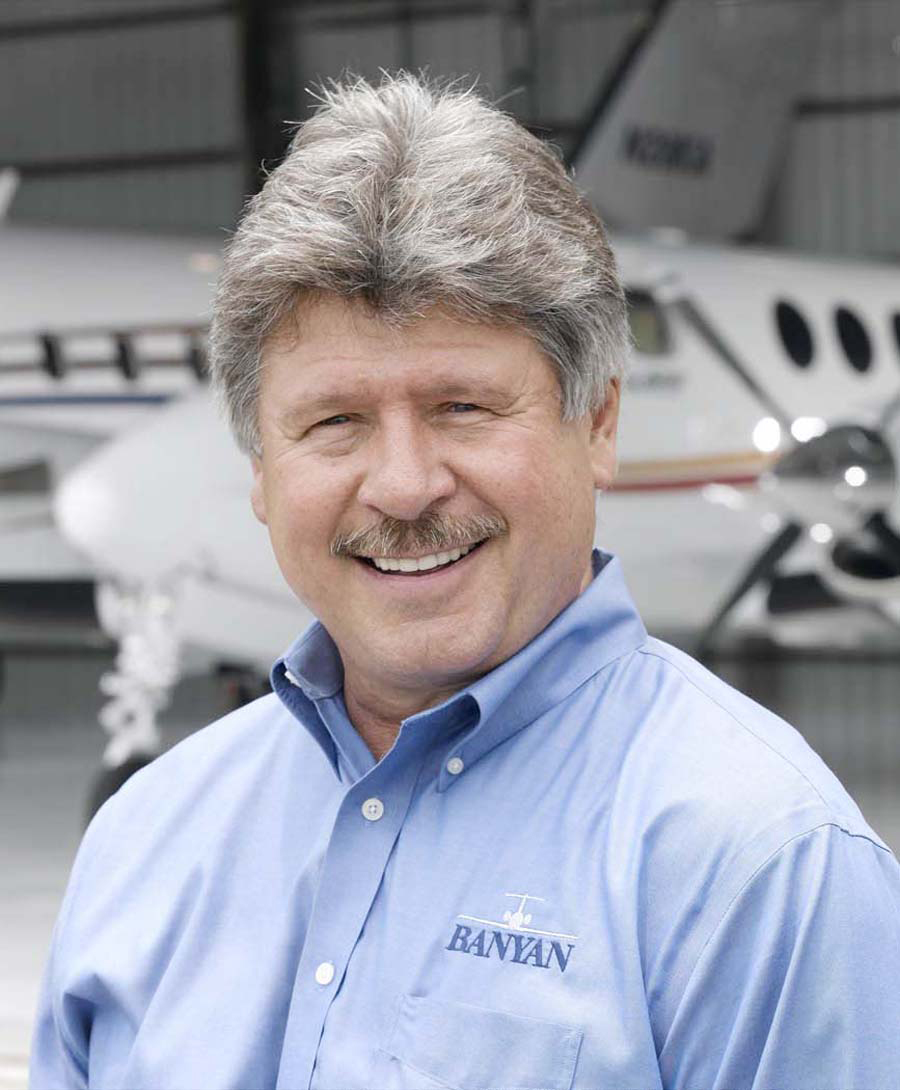
Don Campion, Banyan’s founder






